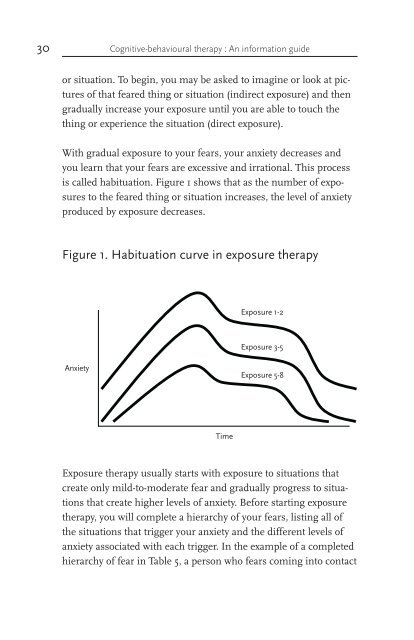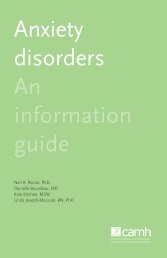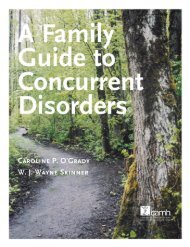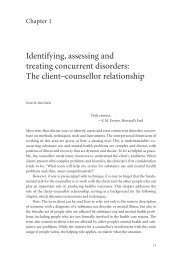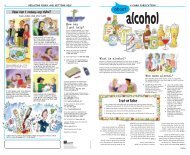Cognitive-behavioural therapy: An information guide - CAMH ...
Cognitive-behavioural therapy: An information guide - CAMH ...
Cognitive-behavioural therapy: An information guide - CAMH ...
Create successful ePaper yourself
Turn your PDF publications into a flip-book with our unique Google optimized e-Paper software.
30 <strong>Cognitive</strong>-<strong>behavioural</strong> <strong>therapy</strong> : <strong>An</strong> <strong>information</strong> <strong>guide</strong><br />
or situation. To begin, you may be asked to imagine or look at pictures<br />
of that feared thing or situation (indirect exposure) and then<br />
gradually increase your exposure until you are able to touch the<br />
thing or experience the situation (direct exposure).<br />
With gradual exposure to your fears, your anxiety decreases and<br />
you learn that your fears are excessive and irrational. This process<br />
is called habituation. Figure 1 shows that as the number of exposures<br />
to the feared thing or situation increases, the level of anxiety<br />
produced by exposure decreases.<br />
Figure 1. Habituation curve in exposure <strong>therapy</strong><br />
Exposure 1-2<br />
Exposure 3-5<br />
<strong>An</strong>xiety<br />
Exposure 5-8<br />
Time<br />
Exposure <strong>therapy</strong> usually starts with exposure to situations that<br />
create only mild-to-moderate fear and gradually progress to situations<br />
that create higher levels of anxiety. Before starting exposure<br />
<strong>therapy</strong>, you will complete a hierarchy of your fears, listing all of<br />
the situations that trigger your anxiety and the different levels of<br />
anxiety associated with each trigger. In the example of a completed<br />
hierarchy of fear in Table 5, a person who fears coming into contact


